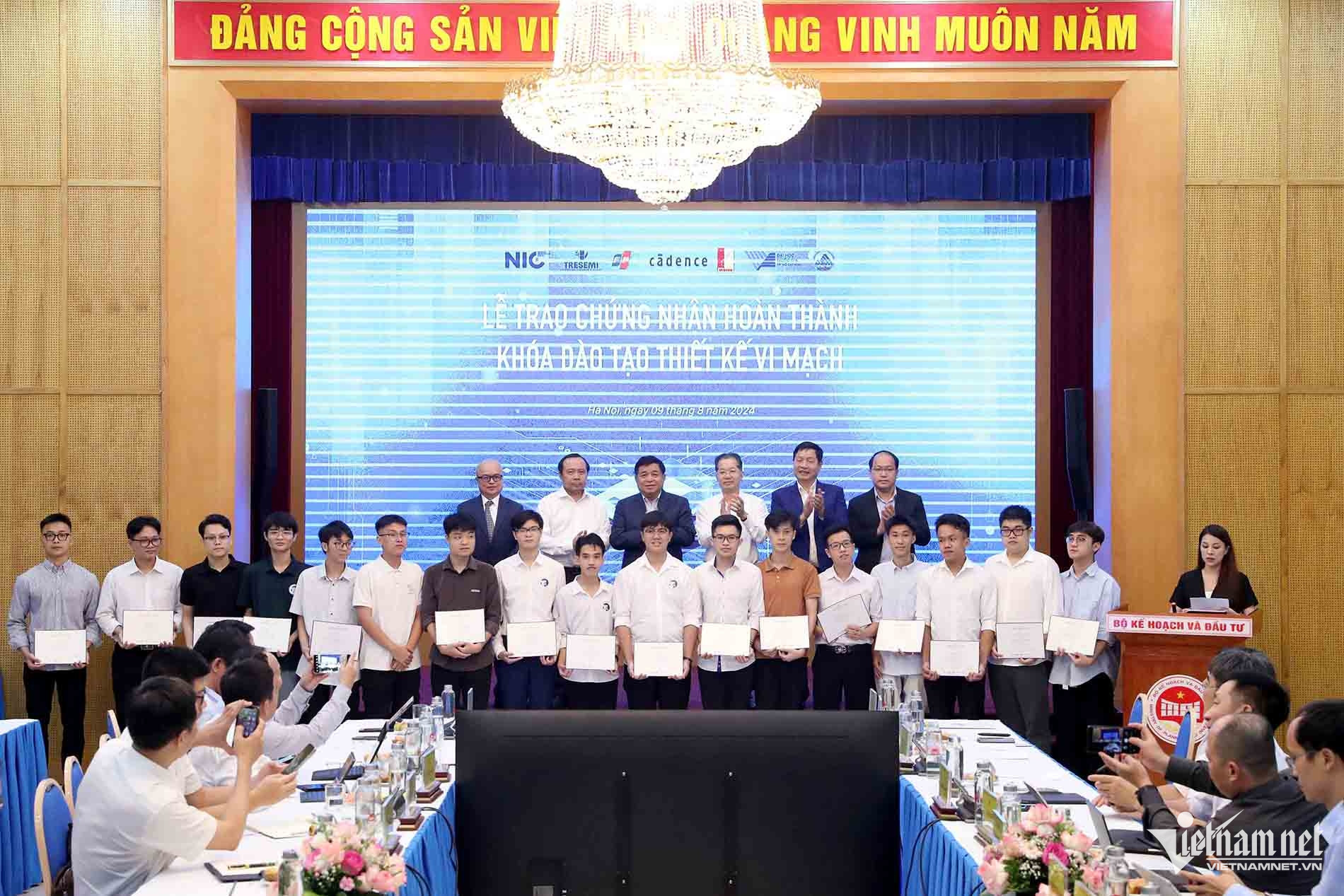
The Ministry of Planning and Investment (MPI) is compiling a project on developing human resources for the semiconductor industry by 2030, realizing the goal of obtaining 50,000 engineers and bachelor’s degree holders who can participate in all phases of the semiconductor value chain.
For many different reasons, youth in developed countries are indifferent to the job opportunities in semiconductors. Meanwhile, people who are working in the field want to leave the industry.
The lack of STEM (Science, Technology, Engineering, and Mathematics) graduates to supplement and replace older workers will create a big hole in the semiconductor labor market.
In such conditions, together with India, Vietnam is considered the country with great potential in exporting technical workers.
In Vietnam, there are about 5,000 engineers who can undertake work in chip design. The figure is still far below the targeted 15,000 design engineers and 35,000 engineers for other phases of the industry.
However, after a period of trial, MPI’s National Innovation Center (NIC) affirmed that the training model with the cooperation of the state, school and businesses can help Vietnam produce more than 5,000 chip design engineers each year.
If the training is implemented in 10 training establishments in localities, this will help solve the question of a semiconductor workforce shortage.
Vu Hai Quan, director of HCM City National University, said that the participation of state’s agencies and businesses during the training period is of extreme necessity.
“The cooperation helps improve training quality, thus creating favorable conditions for learners to satisfy the requirements of the labor market. The current cooperation model between NIC and education and training establishments as well as enterprises needs to be replicated,” Quan said.
Da Nang is one of the localities most active in applying measures to solve the question of engineer shortage.
Nguyen Van Quang, Da Nang Party Committee Secretary, said the city is making every effort to generate a favorable environment for enterprises to participate in developing human resources for semiconductors.
The municipal authorities are applying various solutions, with focus on a good legal framework and policies to attract investments; preparing land bank and infrastructure for enterprises; and cooperating with enterprises in training and attracting talents in the fields of chip, semiconductor and AI.
There are about 10 chip designing firms in Da Nang, including Synopsys, FPT, Viettel, Savarti, Renesas and Synapse with 550 engineers finishing university. This means that the city’s workforce for chip design now accounts for 10 percent of the country’s workforce in the field.
To accelerate the development, Da Nang put the Center for Research and Training in Microchip Design and Artificial Intelligence into operation in January 2024.
Shortly after the establishment, the center signed two strategic cooperation agreements with Synopsus and Intel to deploy the training and fostering of human resources for Da Nang.
“We hope that we would have at least 5,000 engineers in IC and semiconductor by 2030. Of this, there would be 2,000 engineers in designing and 3,000 engineers and technicians in packaging and testing,” Quang said.
On August 9, NIC coordinated with Cadence Corporation, FPT Corporation and the US-based Tresemi to organize the closing ceremony of the 3-month course "Basic VLSI (Very Large Scale Integration) Microcircuit Physical Design".
This is the first in-depth chip designing training course in Vietnam implemented with the participation of the state, schools, and enterprises.
The program selected over 70 excellent students from large universities nationwide and most are last-year students at technology universities.
After graduation, nearly 20 students have been admitted to large corporations, including Marvell, Synopsys, FPT, Faraday and Samsung. Many have been granted scholarships for further study overseas.
FPT president Truong Gia Binh noted that semiconductor major graduates have great job opportunities.
There are many Vietnamese living in the US who are talents in chip industry. They have joined forces to build startups and large enterprises in Vietnam would turn the ideas of startups into reality.
Businesses and schools have urged the government to approve the project on developing human resources in semiconductors soon, so that Vietnam won’t miss the ‘once every thousands of years’ opportunity to develop the industry.
Trong Dat